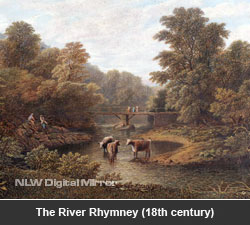
Rivers and Canals
"Like road transport, inland navigation was either impossible or hazardous in Britain before the middle of the 18th Century. The exceptions were in the tidal reaches of the larger rivers and in the few cases where minimum improvements had made the higher reaches of such rivers accessible to small barges. It is true that there had been some large river-works earlier, at least in the 17th Century but these had been concerned with fen drainage and land reclamation. The Thames had been navigable, in a fashion, as far as Oxford, in the 17th Century, using a series of weirs and 'flash locks'. The latter consisted of sections of weir that could be removed, releasing a flood of water, which could then be negotiated in a hazardous manner by the barges. Such locks became obsolete with the introduction of the 'pound lock', but they were once widely used and fragments of them can be found in various parts of the country. The Bristol Avon was made navigable up to Bath in 1727 by the Avon Navigation, which constructed or adapted six weirs and standard pound locks. These improvements, although important for local traffic, by no means resolved the increasingly urgent problem of inland transport, which constricted the development of industry in the large land-locked areas of the country. A more drastic solution to this problem was needed, and the answer was found in the construction of canals."
Image date: unknown
Location: unknown
Submitted by: unknown
Do you have any stories, images and interesting facts relating to this picture. Help Chronicle build a website of your Caerphilly County Borough memories. Email the webmaster telling us as much as you can about your pictures. Thank you
Description: